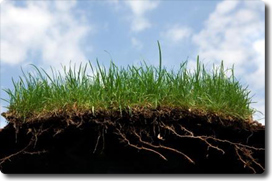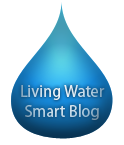Everyone benefits from better use of our water resources.Efficient water use saves on the costs of water infrastructure and energy, reduces the need to find new water supplies, and protects water quality for healthier communities. Farms and businesses can save money, increase productivity and enhance their competitiveness.
Efficiency is a key objective of Living Water Smart and will help B.C. adapt to climate change. Visit Being water smart in your home for government commitments to help reduce water use in our homes, towns and cities.
Studies estimate that almost every sector of the economy can cost-effectively reduce water use by 20 to 50 percent or more. The benefits of reducing water use are even greater when energy savings are considered. Increased efficiency will allow for sustainable economic growth in B.C. and help us adapt to a changing climate.
Visit the new Water Sustainability Act site to find out what changes are being proposed in the Water Act Modernization project.
Encouraging Green Infrastructure
Eighty percent of provincial funding to local governments goes to water-related infrastructure such as water and waste water systems, drinking water treatment and flood protection. Adapting to climate change and reducing our impact on the environment is a condition for receiving provincial infrastructure funding.
Provincial policy, design criteria and new incentives for provincial infrastructure funding already requires greener and smarter designs for development. Higher criteria will be established as technology improves over time. This will encourage developers and engineers to continually seek better solutions to reduce our future water needs.
Water Conservation Calculator Shows Municipalities How to Save Water and Money
The Water Conservation Calculator is an on-line user-friendly tool geared for water purveyors of smaller communities. Its purpose is to illustrate how specific conservation measures yield both fiscal and physical water consumption savings. Smaller communities often cannot allocate resources to traditional infrastructure projects or cannot budget for the development of professional water conservation/efficiency plans. Water purveyors can use the tool to assist in presenting their conservation case to council and other decision makers.

The calculator assists in:
- collecting and recording community water system data;
- preparing useful information about the current state of the water system and future demands;
- comparison of conservation demand management and supply-side upgrade options;
- assistance in more accurately targeting conservation efforts, thereby increasing the cost effectiveness of conservation campaigns;
- offering finance planning for conservation demand management and supply-side upgrades;
- assistance in decision making around new infrastructure (can illustrate the possibility of capital deferment); and
- presenting charting and a printable PDF report based on data inputs, outputs, and benchmark values.
Water conservation should be seen as alternative or supplemental to planned infrastructure projects. In essence, conservation is a resource in its own right. It provides safe, clean, water sooner, that is less costly, and less impactful on the environment than traditional source development or upgrade projects.
» www.waterconservationcalculator.ca
Quality Topsoil: An Asset in Your Garden

An absorbent topsoil layer does more than help your plants and lawn grow well, it also helps you be water smart. Quality topsoil has many benefits including limiting runoff during wet-weather periods and reducing water need during dry-weather periods. The City of Courtenay, City of Surrey and District of North Vancouver are sharing their pioneering experience with other municipal staff and designers. Developed by the Green Infrastructure Partnership, the ‘Topsoil Primer Set’ helps municipalities achieve water sustainability outcomes through implementation of green infrastructure practices.
Two guidance documents are available, one deals with Law and Policy,
and the other provides Technical information.




